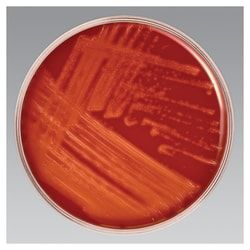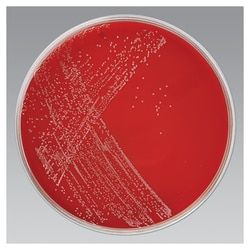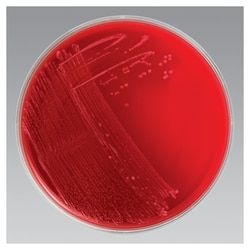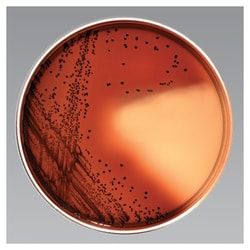R01861
Thermo Scientific™ SXT Blood Agar
Manufacturer: Fischer Scientific
The price for this product is unavailable. Please request a quote
Description
SXT Blood Agar w/ sulfamethoxazole, trimethoprim
Format
10mm x 100mm Spacesaver Plate
Product Type
Agar
Quantity
15/Pk.
Description
- Selectively isolate beta-hemolytic group A streptococci from throat cultures and upper respiratory specimens using Thermo Scientific™ Remel™ SXT Blood Agar
- Pacifico at al
- demonstrated the isolation of β-hemolyic streptococci is improved with the use of a selective medium which inhibits oropharyngeal commensal microbial flora 1
- In 1977, Gunn et al
- introduced a selective medium containing sulfamethoxazole and trimethoprim in a tryptic soy agar base supplemented with 5% sheep blood 2
- In 1979, Kurzynski et al
- proved that streptococci were more frequently isolated on SXT sheep blood agar 3
- Clinical assessment alone is unreliable in distinguishing streptococcal and non-streptococcol pharyngitis 4
- Serious medical complications may follow pharyngitis caused by group A streptococci, making bacterial examination of the throat an indispensable diagnostic tool
- Use of SXT sheep blood agar allows enhanced recovery of Lancefield groups A and B streptococci from throat cultures while inhibiting the growth of commensal microbial flora
- Ready-to-use – The convenience of prepared media Selective – Use of sulfamethoxazole plus trimethoprim (SXT) supresses growth of streptococcal groups C, F, and G and Streptococci viridans , most Enterobacteriaceae, Neisseria , and some Pseudomonas This medium contains casein and soy peptones that provide nutritious source of nitrogen, amino acids, and peptides
- Sheep blood provides growth factors and allows detection of hemolytic reactions
- Sodium chloride maintains osmotic equilibrium
- SXT (sulfamethoxazole, trimethoprim) act as selective agents to supresse most commensal microbial flora found in the oropharynx, including streptococcal groups C, F, and G and Streptococci viridans , most Enterobacteriaceae, Neisseria , and some Pseudomonas spp
- Not all products are available for sale in all territories
- Please inquire
- Remel™ and Oxoid™ products are now part of the Thermo Scientific brand.






